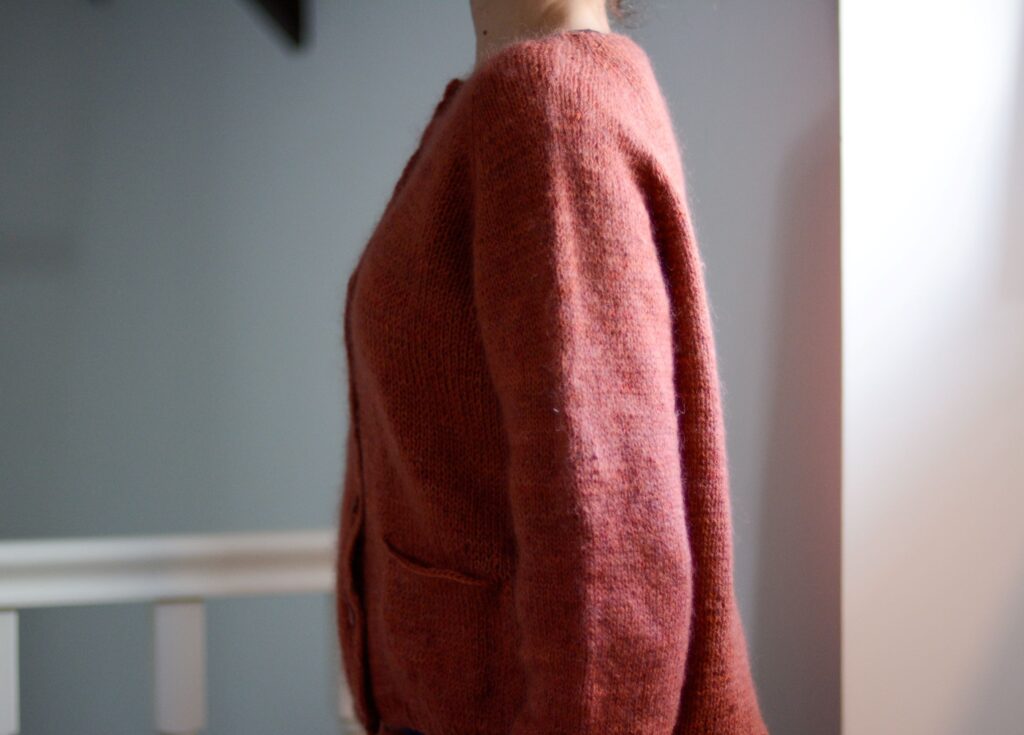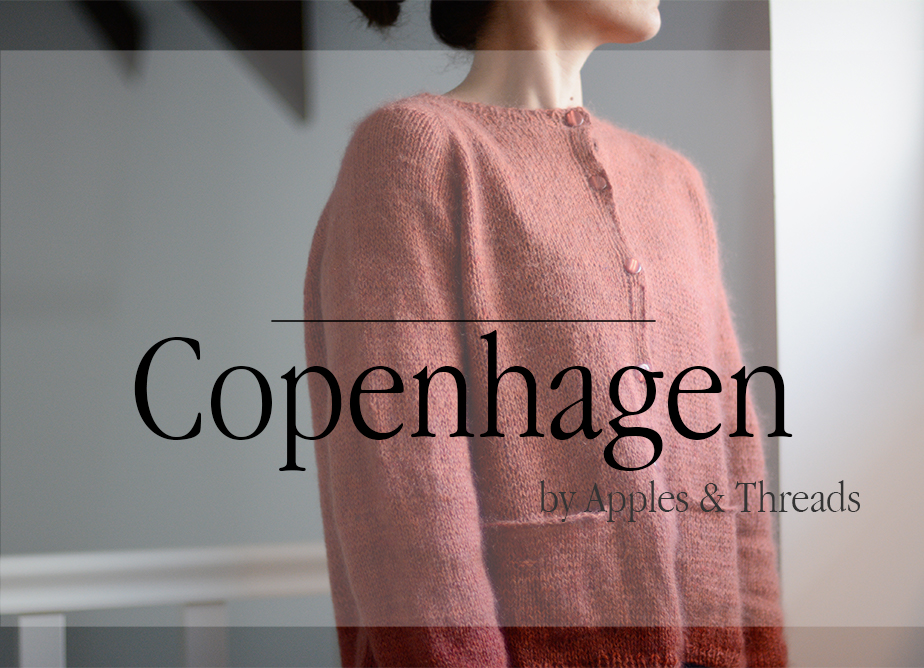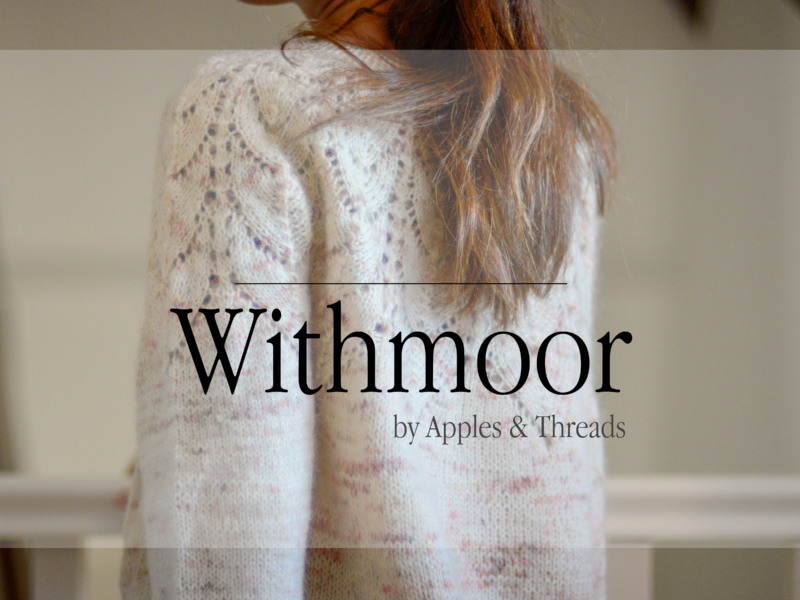Dear ones, I am so excited to write you this article in which I am presenting a knitting project for the first time.
Actually this would be the 4th knitting project but alas I have not yet been able to show you the previous ones 😊.
I washed and blocked it yesterday and couldn’t wait to tell you about it.

.: The pattern
This is the Copenhagen cardigan from PetiteKnit. You can find it in English or French.
It is worked flat from top to bottom with a raglan to make the increases.
The neckline is shaped with reduced ranks. The stitch used is jersey, with circular needles number 3.5 mm (for ribbing) and 4 mm.
The pattern includes 7 or 8 buttons depending on the size used. Buttonholes are created at the end so it is not necessary to make them while knitting.
Another detail, the Copenhagen cardigan is offered with pockets inserted in the front. The sleeves are worked in the round without seams.
I really like this Danish designer, her descriptions are very clear and precise and she proposes several options for the wool to be used.




.: The wool
To make it I used two yarns, Lanivendole’s chic blend, composed of 60% Brogna wool, 20% alpaca and 20% mohair (50g – 225m approx.) color Nasturzi, and Knitting for Olive’s soft silk mohair, 30% silk and 70% mohair (25g – 225m approx.), color forest berry.
As soon as I picked up the chic blend it seemed less soft than other wools I have purchased, but I assure you that after washing and blocking it is nice to wear, I tried it with a sleeveless top underneath and it doesn’t scratch my skin at all!
I had heard so much about the softness of soft silk mohair from Knitting for Olive and I can only confirm.

.: The Size
The model is offered in sizes XS, S, M, L, XL or XXL.
As a size I opted for a size S, with a recommended ease between 6 and 11 cm.
.: The modifications
Honestly being a novice I didn’t have the courage to make any changes to the pattern yet, but I must say that I like the cardigan as proposed.
.: The difficulties
I did not encounter any particular difficulties. I followed the description step by step, except for the pockets. PetiteKnit refers to an explanatory video (in Danish! But at least I find it useful to see the pictures) but I preferred to follow the explanations from Lize Tailor’s book (je deviens expert tricot).
For a “top-down” assembly to create inserted pockets, I worked the stitches to the point where I wanted to insert the pocket (indicated in the instructions). Then I put the 22 stitches corresponding to the pocket opening on hold. I inserted a stitch marker and then on the needle I recreated the same number of stitches put on hold using the French cast on technique. I inserted a second stitch marker and continued to knit until the end of the round.
Once the body and sleeves were finished, I picked up the waiting pocket stitches on the needle and worked them back and forth for the desired length of about 10 cm. I finally sewed the 3 sides of the pocket to the body of the cardigan.
.: The cost
To make the cardigan in size S, I used 4 balls of Nasturzi for EUR 11.90 each and 4 balls of Knitting for Olive Soft Silk Mohair – Forest Berry for EUR 7 each (shipping not included).
For the buttons I chose the Swing – Terracotta – 15 mm diameter by Atelier Brunette for 1.30 EUR each.


Total: 84.70 EUR.
.: Would I knit it again?
It is a very elegant and simple pattern that I would definitely make again. Not right away though because I have a myriad of other patterns in my head that I would like to knit!
And what are your upcoming projects?
🍎 See you soon ! 🍎


